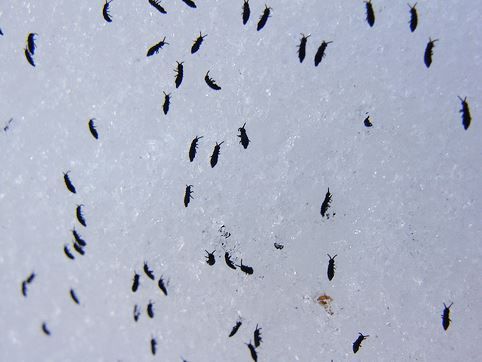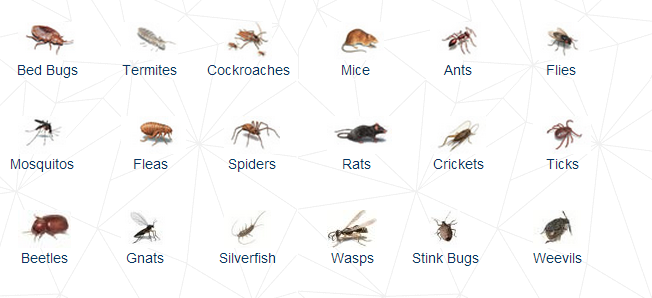Are you having trouble with tiny bugs in your bathroom? You’re not alone! Bathrooms are a hot spot for pests due to the moisture and warmth they provide. Fortunately, identifying and eliminating bathroom bugs is easy if you know what to look for. In this article, we will discuss common bathroom bugs identification and prevention measures to keep your bathroom pest-free.
Bathroom bugs are common household pests that can be found in bathrooms around the world. They are attracted to the warm and humid environment that bathrooms provide, as well as the abundance of organic matter like hair and dead skin cells. Some common types of bathroom bugs include cockroaches, silverfish, drain flies, ants, and spiders.
Table of Contents

Bathroom Bugs Identification. The absolute best option is sending a real insect specimen to an insect diagnostician but that kind of help is costly and time consuming. Bathrooms are a favorite place for german roaches. When you start to notice bugs in the bathroom however it can feel less like an intrusion and more like an invasion. In addition to the bathroom, these parasites can also appear on your bed. To get rid of them, a handheld steamer for bed bugs will help you. You can also try it in the bathroom.
Common Bathroom Bugs
Before we dive into bathroom bugs identification, let’s take a look at the most common ones you might encounter:
1. Silverfish
Silverfish are tiny, silver-gray insects that are typically found in damp and dark areas like bathrooms. They are wingless and move very quickly. Although they do not pose any serious health risks, they can damage books, papers, and other organic materials.
2. Cockroaches
Cockroaches are notorious for their ability to thrive in unsanitary environments like bathrooms. They are attracted to moisture and can enter your bathroom through pipes or drains. Cockroaches can carry harmful bacteria and allergens, which can trigger asthma and other respiratory problems.
3. Drain Flies
Drain flies, also known as moth flies, are small, gray or black flies that are often found around drains and pipes in bathrooms. They breed in organic matter like hair, soap scum, and food particles that accumulate in drains. While they do not pose any health risks, their presence can be unpleasant and unsanitary.
4. Ants
Ants are common household pests that can enter your bathroom in search of water and food. They are attracted to sweet and sticky substances like toothpaste, shampoo, and soap residue. While they are not harmful to humans, they can contaminate your personal hygiene products.
5. Spiders
Spiders are arachnids that can enter your bathroom through cracks and crevices. While they are not harmful to humans, their presence can be alarming and unpleasant. Some species of spiders can be venomous, so it’s best to identify them and take appropriate measures if necessary.
Bathroom Bugs Identification
Now that you know what to look for, let’s discuss how to identify common bathroom bugs:
1. Silverfish
Silverfish are small, flat insects with long antennae and three bristles at the end of their abdomen. They are silver-gray in color and can range from 1/2 to 3/4 inches in length. You can identify them by their distinctive movement pattern, which is a wriggling, fish-like motion.
2. Cockroaches
Cockroaches are reddish-brown or black in color and can range from 1/2 to 2 inches in length. They have a flattened, oval-shaped body and long antennae. You can identify them by their distinctive musty odor and their tendency to scatter when exposed to light.
3. Drain Flies
Drain flies are small, fuzzy flies that are usually less than 1/8 inch long. They have long antennae and are gray or black in color. You can identify them by their characteristic fluttering flight pattern and their habit of congregating around drains.
4. Ants
Ants are small insects with a distinctive segmented body and six legs. They can vary in color depending on the species, but common household ants are typically black, brown, or red. You can identify them by their trail of marching ants and their tendency to congregate around sweet and sticky substances.
5. Spiders
Spiders have two main body parts, eight legs, and fangs. They can vary in size and color depending on the species. Common spiders found in bathrooms include cellar spiders, house spiders, and wolf spiders. You can identify them by their distinctive body shape and their habit of spinning webs.
Prevention Measures
Now that you know how to identify common bathroom bugs, let’s discuss prevention measures to keep them away:
1. Keep Your Bathroom Dry
Moisture is the biggest attractant for bathroom bugs. To prevent them from entering your bathroom, make sure to keep it dry. Use a dehumidifier, open windows, or run the fan while showering to reduce moisture levels.
2. Fix Leaks and Cracks
Leaky pipes and cracks provide easy entry points for bugs. Regularly inspect your bathroom for any leaks or cracks and have them repaired promptly.
3. Regular Cleaning
Regular cleaning can go a long way in preventing bathroom bugs. Clean your bathroom at least once a week and pay special attention to the areas around drains and pipes. Use natural cleaning solutions like vinegar or baking soda to avoid chemical exposure.
4. Proper Storage
Bugs are attracted to clutter and mess. Keep your bathroom clutter-free and store personal hygiene products in sealed containers.
5. Use Natural Remedies
Natural remedies like essential oils, diatomaceous earth, and boric acid can be effective in preventing and eliminating bathroom bugs. These natural remedies are safe and non-toxic, making them a great alternative to chemical insecticides.
Conclusion
Bathroom bugs can be a nuisance and a potential health hazard. However, identifying and preventing them is easy if you know what to look for. By following the prevention measures outlined in this article, you can keep your bathroom pest-free and enjoy a clean and healthy living environment.
Bathroom bugs identification is important for maintaining a clean and healthy living environment. With the knowledge of common bathroom bugs identification features, it becomes easier to prevent their entry and take necessary measures to eliminate them.
Prevention measures such as keeping your bathroom dry, fixing leaks and cracks, regular cleaning, proper storage, and use of natural remedies can go a long way in keeping your bathroom pest-free. By following these simple prevention measures, you can enjoy a clean and healthy bathroom and avoid potential health hazards associated with bathroom bugs.



















